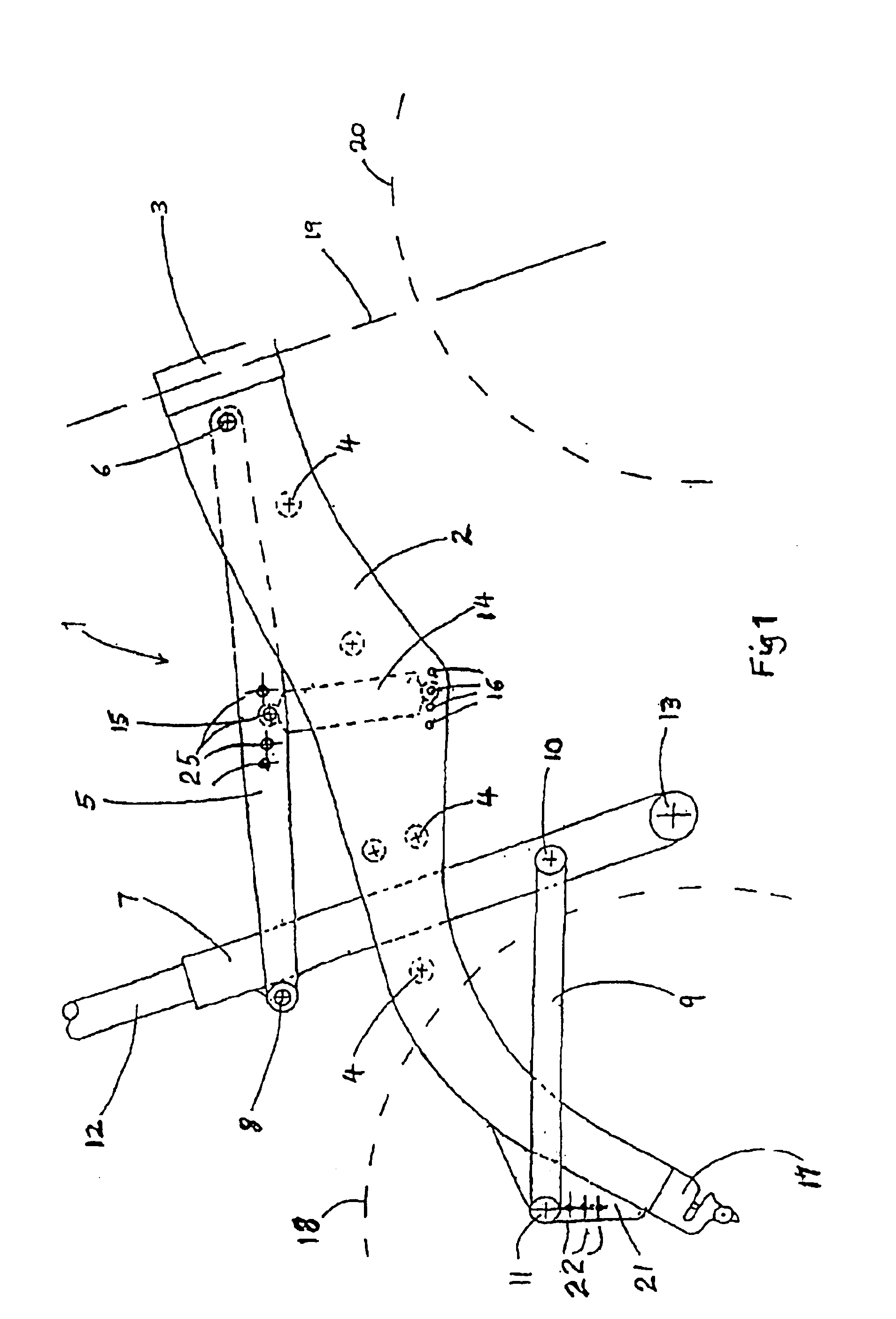Bicycle frame
a bicycle frame and frame technology, applied in the field of bicycle frame and bicycle, can solve the problems of not being able to achieve the optimal response, loosening or damage vital joints, and rapid rider fatigue, and achieve the effect of reducing fatigue and increasing comfor
- Summary
- Abstract
- Description
- Claims
- Application Information
AI Technical Summary
Benefits of technology
Problems solved by technology
Method used
Image
Examples
Embodiment Construction
Referring now to the drawing, a frame 1 for a bicycle comprises a pair of main frame elements 2 (left and right hand pair; left hand element hidden in the view), which are connected and maintained at the required separation by a head set tube 3 and a plurality of spacers 4. The frame 1 comprises a first rigid member 1.
Each main frame element 2 bears at a lower end remote from the head set tube 3, a rear dropout system 17, to which a rear wheel indicated at 18, may be fitted. A set of gears (not shown) may also be fitted to the main frame element 2 adjacent the rear dropout system 17. The rear dropout system 17 may be exchangeable for a rear dropout system adapted to receive a disk-brake unit for the rear wheel 18. Alternatively or additionally, said lower end may also be adapted for carrying loads, such as panniers or camping gear.
A bicycle or mountain bike using the basic frame elements 2 has the rear wheel 18 fitted to the rear dropout system 17, and a front frame (not shown) incl...
PUM
 Login to View More
Login to View More Abstract
Description
Claims
Application Information
 Login to View More
Login to View More - R&D
- Intellectual Property
- Life Sciences
- Materials
- Tech Scout
- Unparalleled Data Quality
- Higher Quality Content
- 60% Fewer Hallucinations
Browse by: Latest US Patents, China's latest patents, Technical Efficacy Thesaurus, Application Domain, Technology Topic, Popular Technical Reports.
© 2025 PatSnap. All rights reserved.Legal|Privacy policy|Modern Slavery Act Transparency Statement|Sitemap|About US| Contact US: help@patsnap.com


